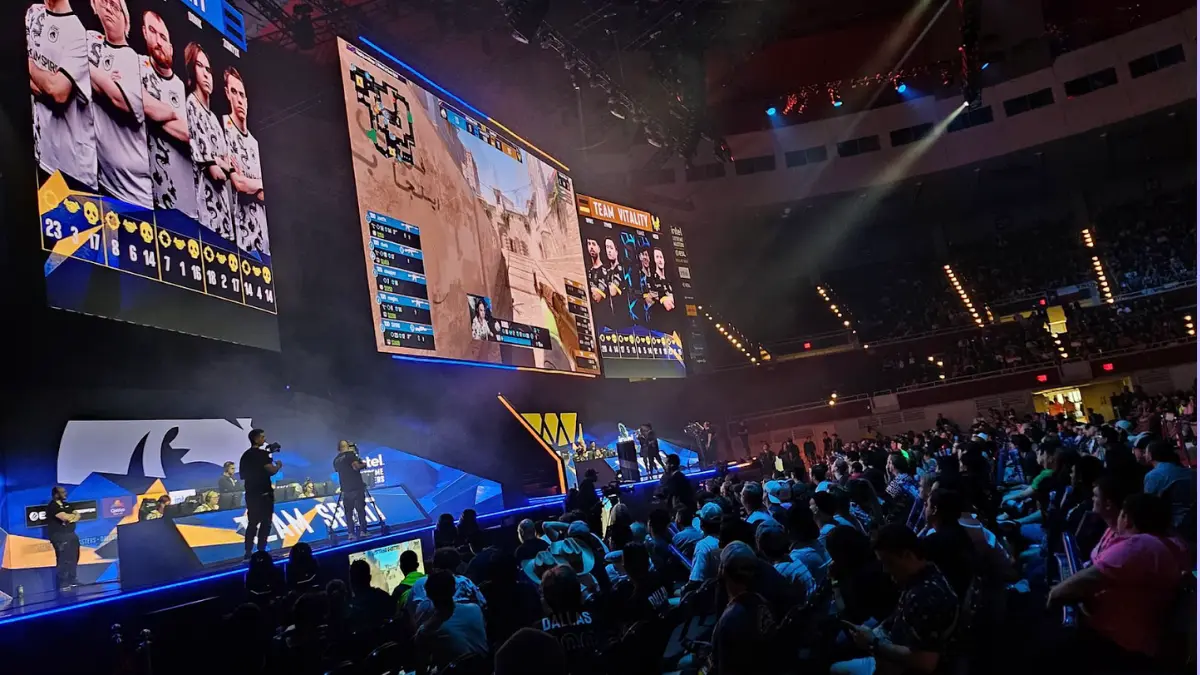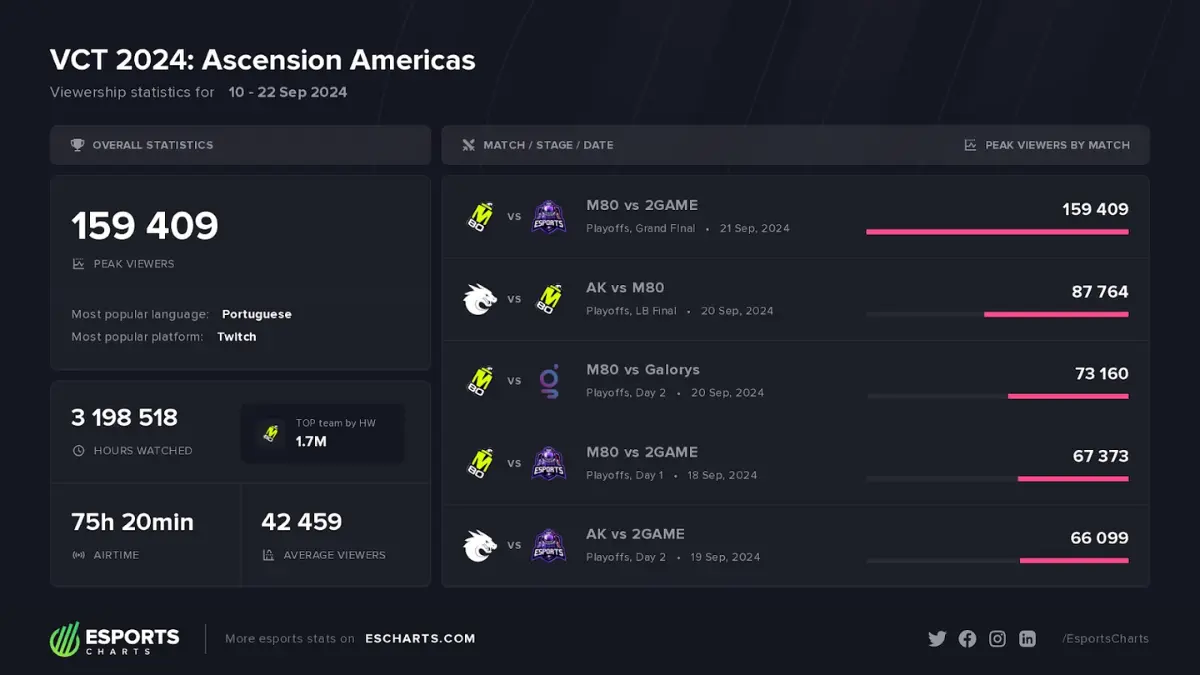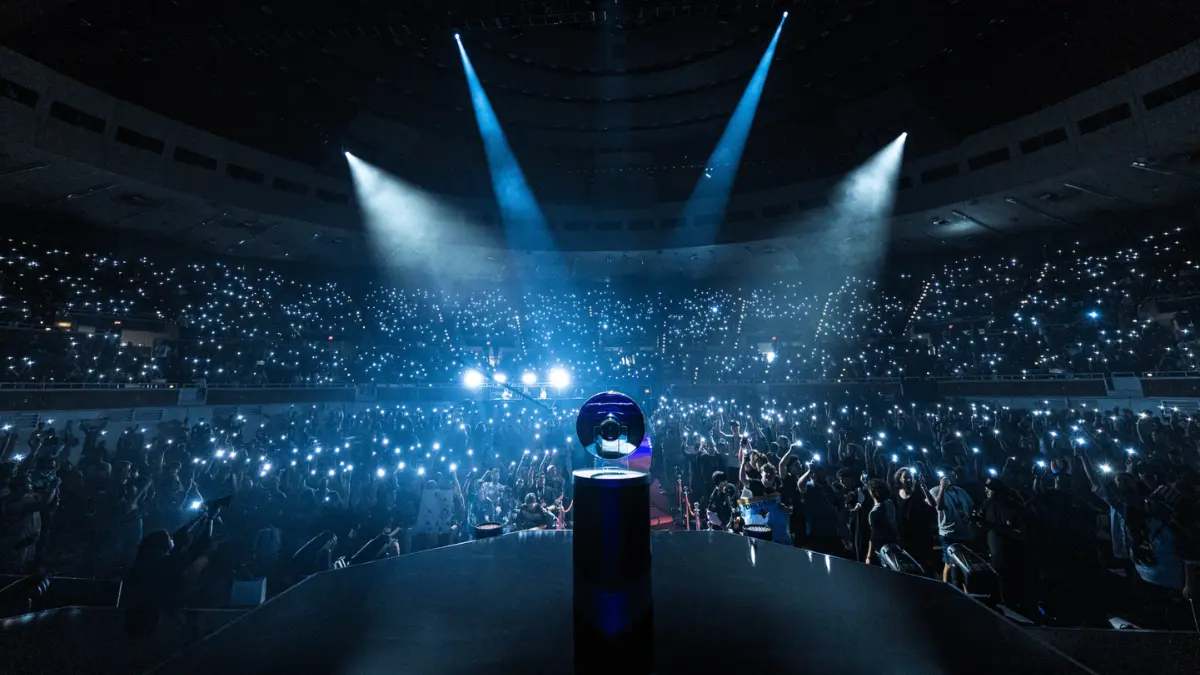The esports boom didn’t start in boardrooms. It was born in smoky arcades and packed LAN centers. Back in the early 2000s, passionate players were battling it out in Street Fighter, Counter-Strike, and StarCraft, long before investors were taking notes.
The earliest organized competitions, like the Cyberathlete Professional League (CPL) founded in 1997, only offered prize pools of a few thousand dollars. But those modest beginnings laid the groundwork for something bigger: a thriving subculture built on the dream of turning gaming skills into cash prizes.
By the late 2000s, competitive gaming was shedding its underground roots. Tournaments like Intel Extreme Masters and DreamHack drew thousands of fans to live events, with DreamHack Winter 2006 pulling in over 10,000 attendees and dishing out serious prize money. Then, in 2007, Justin.tv launched (later evolving into Twitch) and everything changed. Now, anyone with a webcam could broadcast gameplay to a global audience, no ticket required.
Twitch’s growth was staggering. By 2014, it was pulling in over 45 million unique viewers every month, with no signs of slowing down. Mainstage events like The International in Dota 2 shattered viewership and prize pool records, with the inaugural 2011 edition crowdfunding $1.6 million through in-game purchases. Sponsors and media conglomerates piled in, accelerating esports from niche pastime to mainstream juggernaut.
But behind the lights and camera-ready stages, trouble was brewing. Organizations chased hyper-growth without building a sustainable foundation and it wouldn’t take long for the cracks to show.

The boom-or-bust gamble on franchised leagues
By 2018, publishers weren’t really organizing tournaments, more than ever they were selling real estate. Blizzard made waves by launching the Overwatch League (OWL) with a bold city-based franchise model, charging teams upwards of $20 million a slot. The goal? Mimic traditional sports like the NBA and NFL and cash in on regional fandom.
Activision doubled down two years later with Call of Duty League (CDL), setting a minimum $25 million buy-in per team. The pitch attracted a who’s-who of investors like pro sports franchises, entertainment companies, and real estate firms all wanted a piece.
A telling stat: 10 of the CDL’s founding teams were already invested in Overwatch League, going “all-in” on the esports gold rush. Riot Games wasn’t far behind, switching the League Championship Series (LCS) to a franchised format in 2018 with a $10 million buy-in, ensuring only top-dollar orgs could make the cut.
The promise was simple: franchises would get predictable revenue through media rights, sponsorships, and merchandise splits. Blizzard boasted about headline-making deals, including $90 million from Twitch and $160 million from YouTube. But under the surface, teams were suffocating.
As early as 2024, Overwatch community leaders and esports reporters were already openly discussing the crumbling infrastructure, with prominent takes surfacing on r/CompetitiveOverwatch.
Guaranteed player salaries started at $50,000, with some top stars clearing six figures. And the costs didn’t stop there as teams were also expected to cover player housing, healthcare, and retirement plans. Expansion slots ballooned from $20 million to $60 million. Activision Blizzard forecasted OWL would rake in $125 million annually by 2020, but that never happened, especially after Chinese regulations cut off access to major viewership markets.
The costs were staggering: travel, arena rentals, production teams, local activations; the home-and-away model wasn’t just expensive, it was unsustainable. Revenues plateaued. Sponsorships cooled. Teams needed upwards of $10 million in yearly revenue just to stay afloat, and most weren’t even close.
What followed was inevitable: more orgs hemorrhaging cash, fewer new sponsors entering the space, and the first dominoes of the esports business model tipping over.
Even during franchising’s heyday, fans voiced skepticism about the sustainability of the esports bubble, especially on platforms like Reddit’s League of Legends community, where discussions about ROI struggles and investor exits were common long before the layoffs hit.
The bubble bursts as layoffs hit and valuations sink
By 2024, reality slammed into esports like a freight train. The clearest signal came in January when Riot Games laid off around 530 employees (roughly 11% of its entire workforce) citing a need to “streamline operations” and refocus on high-priority projects. Riot wasn’t alone.
Later that same year, Activision Blizzard followed suit, slashing an additional 8% of its staff, including key roles in its esports and publishing divisions. The message was clear: the boom days were officially over.
The cuts weren’t limited to headcounts. Riot’s League of Legends Championship Series (LCS) took a direct hit, downsizing from ten teams to eight for the 2024 season. Then came an even bigger move: a 2025 restructure to consolidate several regional leagues and trim operational budgets by 15%. It was a full-on correction—Riot was finally realigning its costs with the market’s more grounded reality.
Behind every layoff and downsized league was the same story playing out: esports could no longer survive on inflated sponsorship dollars and patchy media rights deals. Subscriber-driven revenue wasn’t enough to offset spiraling production and franchise costs, especially as viewership growth plateaued in key markets.
The gold rush was officially over, replaced by a hard truth: esports companies now faced the uphill battle of building sustainable business models that could actually deliver returns on investment.
Marvel Rivals is the canary in the coal mine
While much of the industry slammed on the brakes, NetEase took a wild swing. In December 2024, they unleashed Marvel Rivals, a hero shooter co-developed with Marvel Games that came out swinging with massive numbers. By February 2025, it boasted over 40 million players, thanks to Marvel’s IP power and a mammoth marketing blitz.
But beneath the shine of Infinity Gauntlets was a hefty price tag. NetEase reportedly paid steep licensing fees to Disney (however, this report has been denied as well), and at one point, internal leaks suggested the game was nearly scrapped over concerns about profitability. Though NetEase denied those reports, the sheer cost of launching Marvel Rivals highlighted how risky late-stage esports investments had become.
More worrying than licensing drama was player retention. While early numbers looked impressive, concurrent player counts have steadily declined since Marvel Rivals peaked in January 2025. Steam Charts data shows an ongoing drop, including a 21.85% player count decline in June compared to May. Other major gaming outlets have flagged similar concerns, raising red flags about the game’s long-term traction.
NetEase didn’t want to chase casual players, it went all-in on esports. The Ignite tournament circuit launched in March 2025 with a $3.05 million prize pool, attracting over 10,000 registered teams from around the world.
Despite this ambitious rollout, early events posted modest numbers, peaking at 120,000 concurrent viewers, according to Esports Charts; respectable, sure, but nowhere near titans like League of Legends or Valorant. Even Twitch Rivals couldn’t break the trend; its Marvel Rivals Showdown hit a peak of 176,000 viewers, far below blockbuster standards.
Underneath the slick trailers and big prize pools, players voiced their frustrations. On forums like Reddit, competitive fans pointed out glaring issues with the meta and game balance. Critics slammed the lack of a proper role queue system, while others questioned whether the gameplay itself could sustain a high-level esports ecosystem.
Marvel Rivals is the perfect late-bubble case study: explosive launch, massive spend, worrying drop-offs. The game may have opened with a bang, but its esports future hinges on more than shiny branding. To survive, NetEase will have to solve its core issues which is keeping players engaged, fixing competitive design flaws, and delivering consistent, watchable tournaments.
Valorant and mobile esports are thriving where franchising failed
While the big-ticket franchised leagues have been busy cutting costs, Riot Games’ Valorant Champions Tour (VCT) is proving there’s another way forward. Riot’s hybrid competitive model mixes established Partner teams with open Challenger circuits, creating a rare balance between professional stability and grassroots accessibility. For players, it offers real promotion pathways. For fans, it keeps the underdog dream alive.
The format shift has paid off. In 2023, North American VCT Challenger events peaked at over 145,000 viewers, proving fans are hungry for competitive formats where anyone can rise through the ranks.
Then came Riot’s June 2024 Ascension revamp (reintroducing promotion and relegation into the system) which cranked up the stakes even further. The result? Explosive viewership growth. VCT 2024: Ascension Americas peaked at over 159,000 viewers, marking a 32.2% increase over the previous year’s event.

Where traditional leagues collapsed under the weight of buy-ins and operating costs, Valorant thrived by keeping the ladder open. It’s a model that celebrates performance over pay-to-play, and the numbers show fans are buying in.
The same story is unfolding in mobile esports, which has quietly become one of the fastest-growing corners of competitive gaming. These titles bypass the franchise system entirely, thriving on accessibility and hyper-local fan engagement. PUBG Mobile crushed viewership in 2024, pulling a peak of 985,000 viewers during the Global Championship. Free Fire followed suit, with 751,000 peak viewers tuning in for the 2024 World Series Global Finals.
Even with minor year-over-year fluctuations, mobile is booming and the trajectory is undeniable. Platforms like Mobile Legends: Bang Bang and Garena Free Fire dominated streaming hours through early 2024, showing how minimal hardware barriers and localized ecosystems are drawing in fans by the millions.
Platform fragmentation is a feature, not a bug
Some analysts have been quick to blame esports’ stumbles on “platform fragmentation,” pointing to the moment Blizzard moved Overwatch League exclusively to YouTube in 2020 via a reported $160 million deal. Critics flagged immediate viewership drops on YouTube but the full picture is more complicated.
The drop wasn’t about fans quitting, it was about how they watched. A closer look reveals a different trend: esports audiences aren’t leaving, they’re diversifying. Today’s fans spread their attention across Twitch for live broadcasts, YouTube for VODs and highlights, Facebook Gaming for community events, and TikTok for quick-fire clips. The audience hasn’t shrunk, it’s splintered into a 24/7 multi-platform machine.
That creates challenges for advertisers but also new opportunities. Instead of locking into a single platform, brands can now target their spending: Twitch for primetime broadcasts, YouTube for broader audiences, Facebook Gaming for niche communities, and TikTok for rapid social reach.
And the data backs it up. According to Stream Hatchet’s 2024 report, live streaming didn’t decline, it actually bounced back with a 12% year-over-year increase in hours watched. In other words, the audience is still growing, just in more fragmented ways.
Esports isn’t facing a viewership collapse like many believe, it’s undergoing a shift in how fans engage with content. The leagues that embrace this decentralized reality are thriving. Those stuck chasing single-platform deals are struggling to adapt. The future won’t consist of corralling fans onto one site. Instead, it will be about learning to meet them wherever they are in a cost-effective way.
Community-powered competition is still king
While franchised leagues love hogging headlines, the heart of esports beats loudest at the grassroots level. The industry’s most enduring success stories didn’t come from multimillion-dollar arenas, they came from LAN halls, indie brackets, and local heroes. DreamHack Opens, community-run StarCraft leagues, indie fighting game tournaments, and Twitch-hosted charity events have all driven esports forward, not by chasing corporate dollars, but through raw community passion.
Take DreamHack as the textbook example. Events like DreamHack Dallas celebrate everyday players. DreamHack participation guidelines actively encourage community participation, creating an ecosystem where fans and amateurs share the same stage as their heroes. During DreamHack Dallas 2024, tournaments for Street Fighter 6 and Tekken 8 drew huge watch times, despite operating in the shadow of franchised giants.

Grassroots events thrive on authenticity. They run with minimal overhead, driven by organizers who care more about community than corporate returns. Whether it’s local Valorant showdowns or old-school Smash Bros. brackets, indie-run tournaments keep esports accessible. They even attract new competitors, people who might never step foot in a franchised circuit but still want to battle it out on stage.
More importantly, these spaces are foundational to esports’ inclusivity. They welcome every skill level, foster local talent, and build stronger gaming communities from the ground up. The lasting success of these grassroots initiatives proves one simple truth: esports thrives when community leads the way, not corporate balance sheets.
Innovation over imitation is the mindset esports actually needs
If there’s one thing esports should not do, it’s copy traditional sports. Basketball and football are built on stadiums and decades-old models whereas competitive gaming thrives in the digital world. Esports is uniquely positioned to lead with innovation, and that’s exactly where the next wave of growth is happening.
Cloud gaming is one of the biggest forces opening doors. Platforms like NVIDIA GeForce Now are shattering hardware barriers by letting players stream demanding titles without needing high-end rigs. According to Market.us, the cloud gaming user base hit nearly 400 million in 2024 and is expected to top 455 million by 2025. That’s an explosion of accessibility, opening the competitive scene to players from regions previously locked out by cost barriers.
The next game-changer? Artificial intelligence. AI tools like Mobalytics and Shadow Network are already transforming how players train, offering personalized coaching, performance analytics, and automated highlight reels that traditional sports broadcasters can’t replicate. AI-driven scouting tools have even boosted pro team recruitment success rates by 15%. Instead of just leveling up the pros, AI is democratizing high-level coaching thus making game improvement more accessible for everyone.
Then there’s the VR and AR revolution. Virtual reality esports are booming, with the VR market valued at $1.42 billion in 2024 and projected to hit over $11 billion by 2033. Whether it’s VR arenas for live events or AR overlays for real-time stats, the fan experience is about to get a full-blown immersive upgrade.
Cross-platform play is closing the gap between devices too. Titles blending mobile, console, and PC competition into a single ecosystem are expanding esports’ reach, ensuring more people can compete, regardless of platform. Cross-platform leagues are good for longevity.
Esports doesn’t need to mimic the NFL. It can outgrow it by doing what digital culture does best: innovate, evolve, and invite everyone in.
Why balance will decide esports’ future
Multiple industry insiders, including The Ankler’s in-depth breakdown, have highlighted how the esports bubble wasn’t driven by declining fan interest—it was the overengineering of esports as a product that ultimately collapsed under its own weight.
Esports has always existed at the crossroads of two forces: grassroots passion and corporate ambition. From the start, competitive gaming was built by communities—by local organizers, indie tournament runners, and players who built scenes from the ground up. But as big publishers and franchise investors moved in, a clash was inevitable.
Major companies prioritized rapid financial returns, leaning on expensive buy-ins and centralized control, a stark contrast to the community-driven culture that had always defined esports.
This tension has surfaced time and again. EVO, the crown jewel of the fighting game scene, offers a prime example. Throughout its history, EVO has pushed back against publisher interference, fighting to preserve its community-first identity. A memorable flashpoint came with Super Smash Bros. Melee. After Nintendo tried to block Melee’s inclusion at EVO, community crowdfunding forced a reversal, proving just how much sway players and fans can wield when united.

Similar patterns played out during the tailspin of the Overwatch League. While corporate backers scrambled to stem losses, teams like Boston Uprising leaned into grassroots fan engagement, turning to volunteer-run events and community watch parties to stay relevant. Even when the business model faltered, the community kept the fire burning.
The lesson is clear: long-term esports success isn’t about swinging toward either extreme. It’s about finding a middle ground like using publisher support to fund bigger prize pools and polished productions, while protecting grassroots pathways that keep scenes accessible, authentic, and welcoming to new talent. Sustainable growth comes from empowering communities, not replacing them.
Esports isn’t imploding, it’s evolving. The wild west gold rush era is ending, and in its place, a more balanced, sustainable industry is emerging. One where innovation beats imitation, where fans matter more than shareholders, and where the goal isn’t to mimic sports leagues but to build something uniquely gaming.
What winning looks like in the next era
The Ankler put it bluntly: the bubble was inevitable, and the smart money now backs community-first ecosystems, not VC-fueled mega leagues.
Esports isn’t dead but it’s certainly been overdue for a reset. The next generation of successful esports will be built on smarter foundations: community-first ecosystems, flexible competitive formats, and digital-native experiences.
Here’s what the industry needs to double down on:
- Champion grassroots events and creators: The most loyal fans come from the bottom up, not the top down.
- Adopt hybrid tournament structures: Open pathways keep scenes alive, while partner leagues stabilize the top end.
- Expand into mobile and emerging markets: Low barriers create bigger, more diverse audiences.
- Diversify across platforms: Meet fans where they are, whether that’s Twitch, YouTube, TikTok, or the next big thing.
Esports doesn’t need to be the next NFL when it can be something better, something uniquely digital, fan-driven, and globally accessible.


